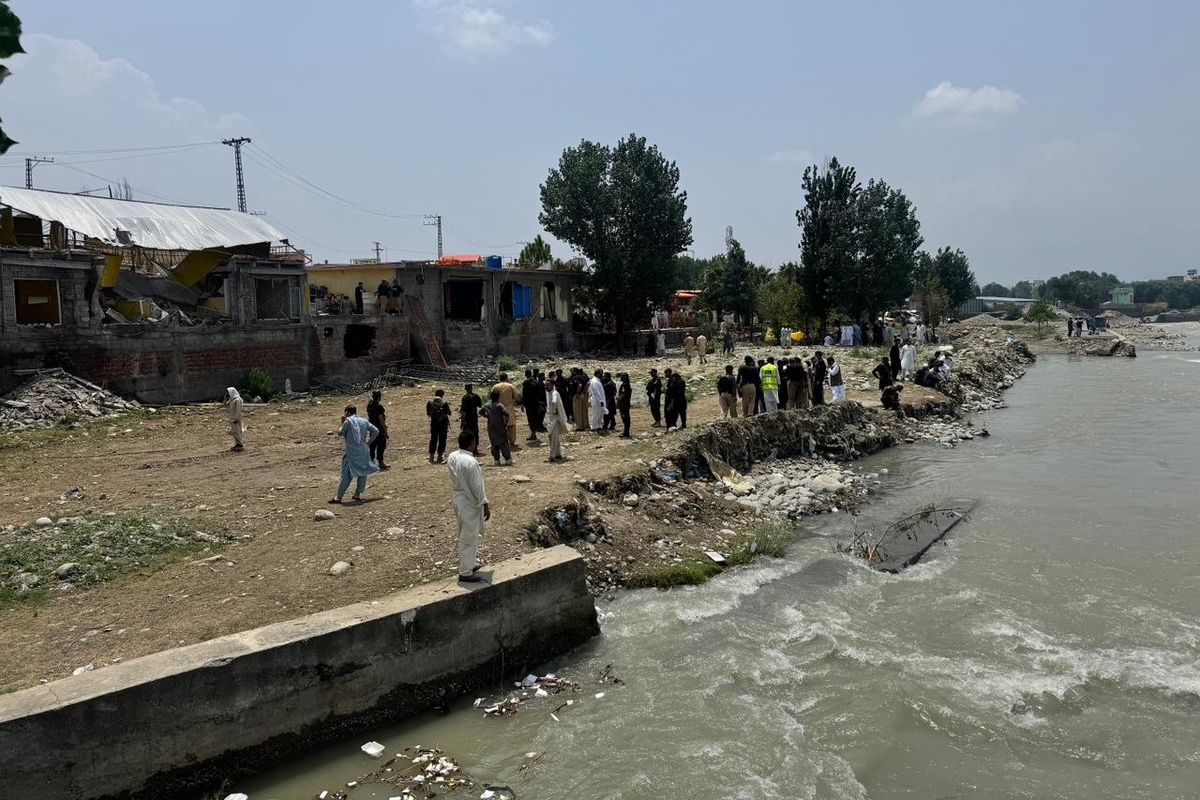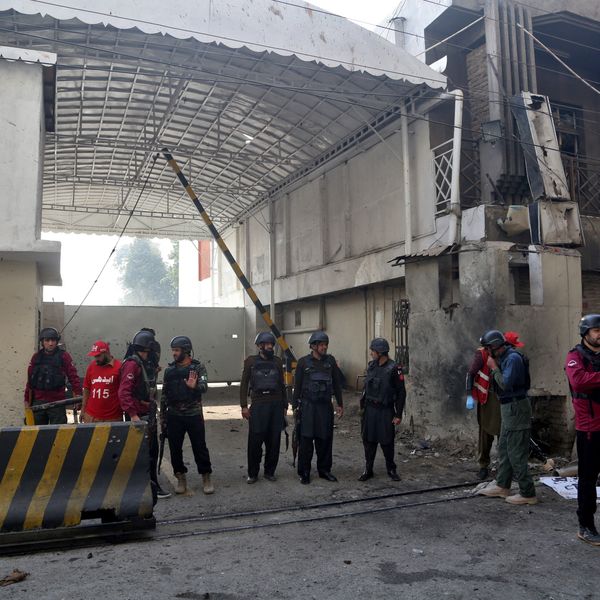As families mourn and child remains missing, Swat floods expose crisis response gaps
As rescue teams search downstream, the Swat flood tragedy that killed at least 12 exposes delays, failed warnings and weak disaster preparedness
Kamran Ali
Correspondent Nukta
Kamran Ali, a seasoned journalist from Khyber Pakhtunkhwa, Pakistan, has a decade of experience covering terrorism, human rights, politics, economy, climate change, culture, and sports. With an MS in Media Studies, he has worked across print, radio, TV, and digital media, producing investigative reports and co-hosting shows that highlight critical issues.

Onlookers and law enforcers gather near a riverbank in Swat.
Author
What was meant to be a brief riverside stop for a group of tourists ended in tragedy last week when a sudden flash flood swept away 16 people in the Swat River -- most of them from a single family.
The incident occurred on the morning of June 27 near the riverbank, where the visitors had gathered to take photographs. Four days on, 12 bodies have been recovered, three people have been rescued, and one child -- 13-year-old Abdullah -- remains missing.
As rescue teams continue search operations downstream, the tragedy has raised serious questions over the timeliness of the emergency response, the absence of functional early warning systems and the broader preparedness of authorities in managing swift-water disasters in the region.
According to District Emergency Officer Rafi Ullah Marwat, 16 tourists were swept away by the current. He noted that rescue operations are not currently facing major obstacles, owing to low water flow in the river. However, search efforts have now expanded to downstream districts including Lower Dir, Malakand, Charsadda, and Nowshera, in hopes of finding Abdullah.
Rescue delays and eyewitness accounts
Civil society representative and eyewitness Aziz-ul-Haq criticized the delayed response, stating that victims remained stranded for hours despite being only minutes away from the nearest emergency office.

“The first responders didn’t even answer calls initially,” he told Nukta. “When they finally arrived, they had no equipment and had to turn back. Had they acted swiftly, lives could have been saved.”
Timeline of the tragedy
Former Deputy Commissioner of Swat, Shehzad Mehboob, confirmed a breakdown in the emergency response system, revealing that the first call received at 9:49 a.m. was mistakenly treated as a medical emergency rather than a water rescue.
According to Mehboob, the tourist group had arrived at the riverbank at 9:36 a.m. Within minutes, a sudden flash flood surged through the area, and by 9:45 a.m., the group was completely trapped.
An ambulance arrived at 10:07 a.m., only for the responders to realize they lacked the equipment for a river operation. “A disaster rescue vehicle with boats and generators had to be arranged afterward,” Mehboob said.
The actual rescue began between 10:20 a.m. and 10:30 a.m., using a makeshift raft made from inflated tubes -- locally known as a Jaal or Jaalai.
Defending the use of these local rafts, Marwat said that Swat River’s unique topography -- a rocky bed with shallow patches and strong currents -- makes conventional rescue methods like diving or motorboats impractical.
“Divers can’t operate safely in these conditions, and motorboats often fail. The Jaal, with its inflatable design, is our most reliable option for swift-water rescues,” he explained.
Why no helicopter was used
Shah Fahad, Director General of Rescue 1122 Khyber Pakhtunkhwa, said the intensity and speed of the incident left little time for alternatives. While a helicopter was considered, poor weather and the critical time window ruled out its deployment.

Rescue sources further revealed that the Chief Minister’s helicopter — designated as an air ambulance under Rescue 1122 — was unfit for high-risk operations. “It lacks the equipment needed to assist those stranded, and its downwash could have knocked people off balance, worsening the situation,” one source said.
Warnings were issued but systems failed
Anwar Shehzad, spokesperson for the Provincial Disaster Management Authority (PDMA), confirmed that a weather advisory was issued on June 25, warning of a rising wave. Still, the rapid spike in water flow -- from below 10,000 cusecs to over 77,000 cusecs -- was beyond expectations, triggered by heavy rainfall and a cloudburst.
Officials also admitted that an early warning flood system, supplied in 2010 for the Swat River, was never installed and remains idle in government offices. “Had it been active, it could have provided life-saving lead time,” one official said anonymously.
In light of the advisory, authorities had imposed Section 144, banning boating and swimming. Over the past five days, more than 80 First Information Reports (FIRs) were registered for violations.

Government response and accountability measures
Barrister Muhammad Ali Saif, Advisor to the Khyber Pakhtunkhwa Chief Minister on Information, acknowledged negligence on the part of officials and confirmed disciplinary actions. “Four officials have been suspended, and the Deputy Commissioner of Swat removed,” he said, adding that the Chief Minister’s Inspection Team has launched an inquiry.
Saif noted that while the response was delayed at the incident site, more than 80 individuals were rescued from other locations that same day.
In response to the disaster, the government has launched a large-scale anti-encroachment drive, targeting hotels, stalls, and shops built along the riverbank — structures now viewed as having intensified the disaster’s impact.










Comments
See what people are discussing